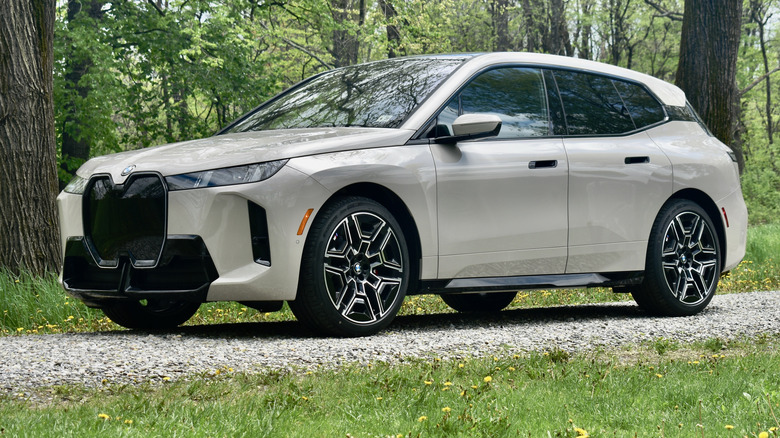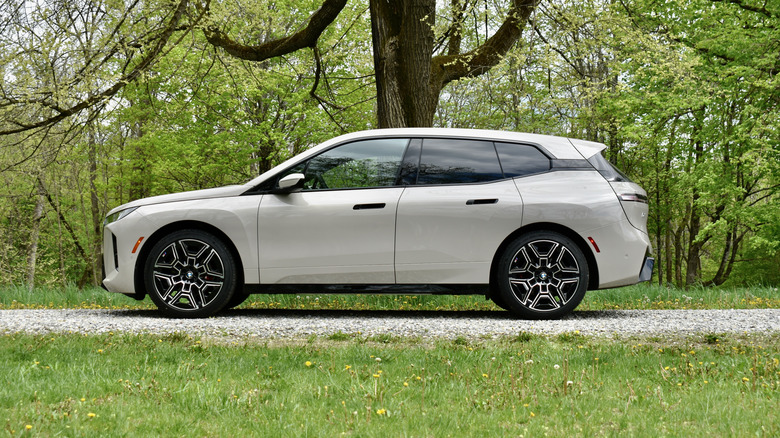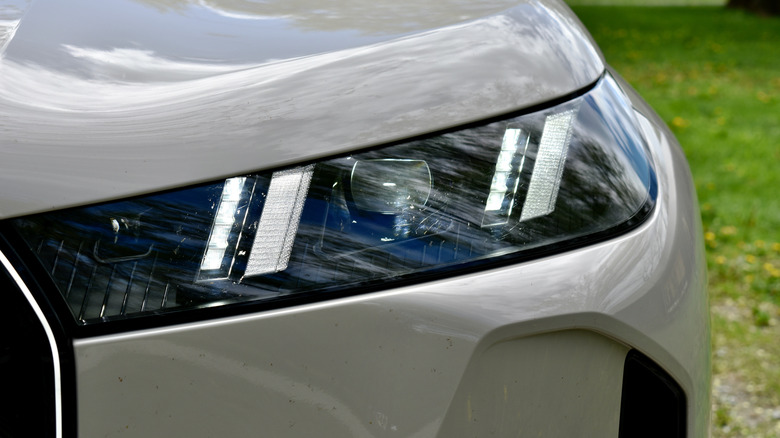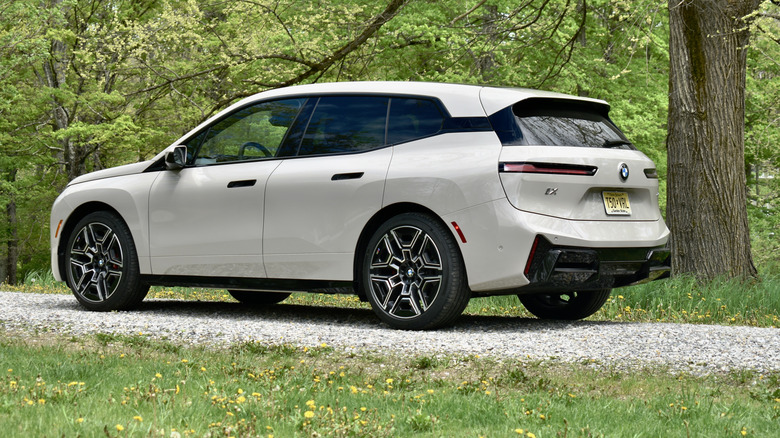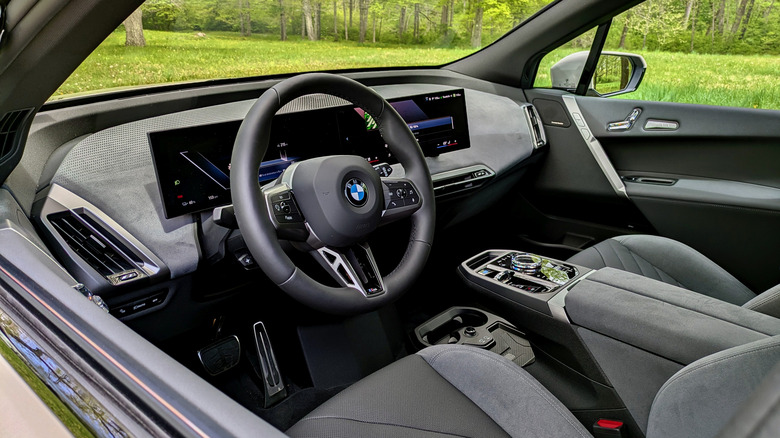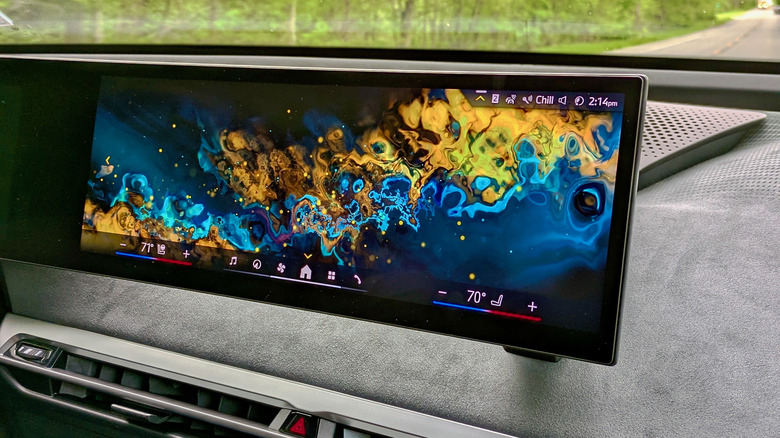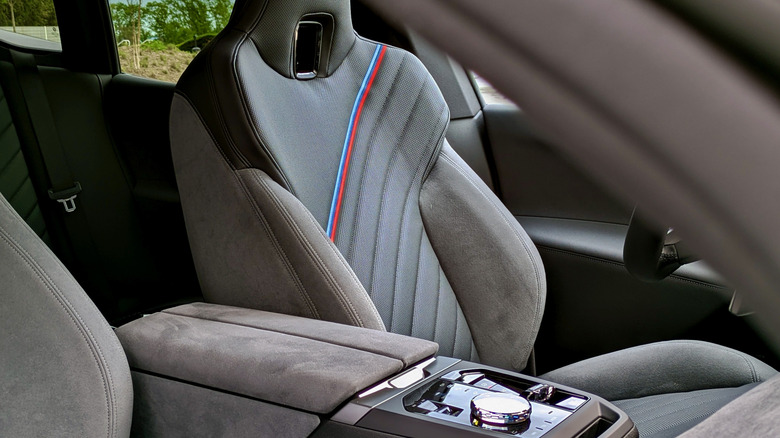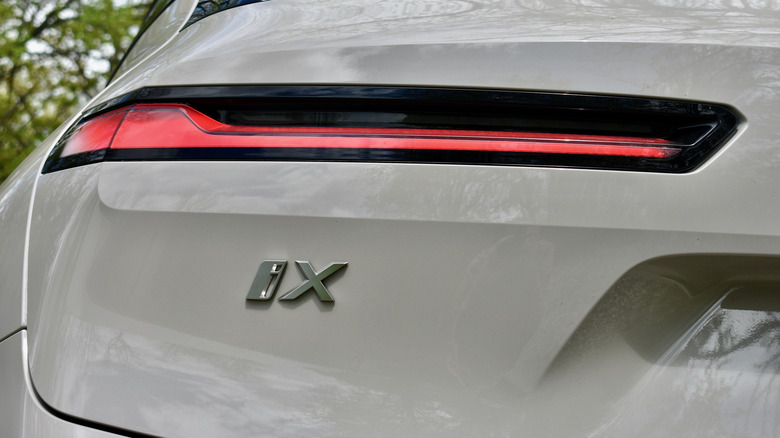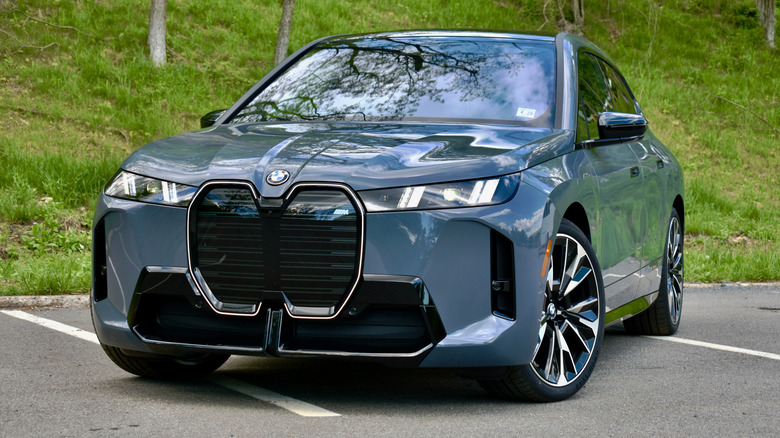I Expected The 2026 BMW iX To Be Cheaper, But It Turned Out To Be A Better EV, Too
Call it nimbleness or indecision, but BMW has changed its plans numerous times over the past few years—and the iX electric SUV is a reminder of that.
The iX was originally supposed to be a showcase for BMW's autonomous-driving tech but, by the time it arrived as a 2022 model, it was clear that tech wouldn't be ready. With unorthodox styling and competent engineering, the iX instead found a purpose as BMW's electric poster child at a time when the automaker's EV lineup was ebbing. But it's at risk of getting caught out once again.
The 2026 BMW iX receives a mid-cycle refresh—what BMW calls a Lifecycle Impulse (LCI)—encompassing styling changes, updated tech, and performance and efficiency improvements. But with BMW's lineup now stocked with more conventional EVs based on its familiar combustion models, and the automaker's next-generation Neue Klasse models on the way, does it really matter?
New lineup, same polarizing look
BMW reset the iX lineup for 2026. The iX xDrive60 replaces the xDrive50, the iX xDrive M70 replaces the M60 as the sportiest iX model, and a new iX xDrive45 base model joins the lineup, lowering the price of entry by more than $10,000. But internet commenters would likely have preferred equivalent changes to the styling as well.
The iX has drawn derision for its massive grille, which returns for 2026 with optional illumination. It certainly draws so much attention that it's hard to notice the new headlights, which have hash-mark-like vertical elements, or indeed anything else about the iX. The real problem is that the grille isn't balanced out by distinctive styling elements elsewhere. The rest of the exterior is fairly generic, and its tall body sides with surfaces smoothed by the wind tunnel almost suggest a minivan without the sliding doors.
Helping to counteract that image somewhat is a new M Sport Package, with sportier styling features that are also applied to the M70 model by default. The M Sport front fascia includes large air intakes that square off the front end a bit, while the rear fascia sprouts a mini diffuser. It also upgrades the xDrive45 and xDrive60 from 20-inch wheels to 21-inch or 22-inch wheels. The latter are standard on the M70, but it can be equipped with 23-inch wheels as well—the biggest so far on an iX.
Range and power improvements
Bigger changes can be found on the spec sheet. Dual-motor all-wheel drive remains standard across the board (hence the "xDrive" designator in each model's name) but battery improvements—specifically changes to the battery management system's operating strategy—help extract more range.
BMW expects the lowest-range iX xDrive M70 to get 302 miles from its 112.8-kilowatt-hour (net capacity) battery pack—just under the 309 miles of the longest-range 2025 iX model. The 2026 iX xDrive60 uses the same pack, but with software that allows a slightly higher net capacity of 113.4 kWh, yielding an estimated 340 miles. The new iX xDrive45 base model gets an estimated 312 miles from a 100.1-kWh pack that's slightly smaller than the 109-kWh pack used in all 2025 models.
The M70 also boasts 650 horsepower and 811 pound-feet of torque: 40 hp and 62 lb-ft more than the outgoing M60. The xDrive60 makes 536 hp and 546 lb-ft, giving it 20 hp more than the xDrive50 model it replaces, and the same torque. The base xDrive45 is rated at a still-substantial 402 hp and 516 lb-ft of torque.
Three models with similar personalities
Despite the additional power, the M70 isn't any quicker than the M60 in zero to 60 mph acceleration. But that 3.6-second time is plenty quick for what is a fairly large SUV, and an appreciable gain over the 4.4 seconds of the xDrive60 and 4.9 seconds of the xDrive45. Top speed is 130 mph for the M70 (or 155 mph with optional performance tires) and 124 mph for the other two models.
The M70 also comes standard with air suspension and rear-axle steering, which imbued it with a poise and precision that belied its 5,849-pound curb weight. Ride quality was excellent even on the optional 23-inch wheels, but the suspension wasn't so soft was to allow uncontrolled body motion. Rear-axle steering helped the M70 turn into corners more eagerly than expected, but also felt natural and calm. It was easy to get the iX to take a set in corners without having to manhandle the wheel, or issue mid-corner corrections. And that helps build confidence, the most important thing in a driver's car.
The only problem—for BMW dealers at least—is that those same features can be added to the less-expensive xDrive45 and xDrive60 models courtesy of the optional Dynamic Handling Package. The M70 also has different damper tuning and anti-roll bars, but it was hard to detect the differences on the drive route. That also goes for acceleration, which felt brutal even in the base xDrive45, leaving little room for improvement.
Imaginative interior
BMW didn't change the interior, but that's alright as the carryover design is both imaginative and functional. The dashboard is pushed back and angled, creating a greater feeling of spaciousness while showing off the curved infotainment display, which stands proud on bridge-support-like struts. The door panels have deep pockets at the bottom, but curve away at the top, leaving room for the best armrests in the business.
Shift buttons, drive-mode controls, and the iDrive rotary controller rest on a floating center console with cupholders below. The rotary controller, as well as the seat-adjustment buttons on the doors, can still be had in crystal which, along with a hexagonal steering wheel, further sets the interior apart and completes its futuristic-luxury vibe.
The new-for-2026 M Sport Package dials that back in favor of something more familiarly BMW. In addition to the typical Alcantara trim and "M" badges, it swaps out the hexagonal steering wheel for a conventional one from other BMW models. It's still unclear which focus group led automakers to determine that a bratwurst-diameter rim is "sporty" but at least the M Sport wheel does away with the standard iX wheel's annoying capacitive controls.
The M Sport Package also includes sport seats with added bolstering, a neat concave shape, and an available upholstery pattern with a diagonal stripe that perfectly fits this car's quirky character. They were quite comfortable, although it's hard to say if they were comfortable enough to warrant spending extra on the M Sport Package.
Familiar tech
The iDrive infotainment system hasn't changed much with this refresh, but that's because the iX was already in the vanguard when it launched for the 2022 model year. It introduced BMW's curved dashboard display—combining a 12.3-inch digital instrument cluster and 14.9-inch touchscreen—and was the first Bimmer with digital key functionality. Both features continue for 2026, with an upgrade to BMW Operating System 8.5 (from version 8.0 previously) mostly notable for the addition of in-car gaming options.
This means the user experience is basically the same. Top-level functions are easy to find, but the numerous settings are buried in a series of menus that are harder to figure out. For example, we couldn't figure out if one of the iX test vehicles' gesture controls were active, nor could we find the menu to check. It's much easier to use the touchscreen, built-in voice control system, or wireless Apple CarPlay/Android Auto (both remain standard), anyway.
The iX also continues to offer the full range of BMW driver-assist tech, including expected features like lane-keep assist and adaptive cruise control, although it takes a thorough perusal of the options list to get everything. Highway Assistant allows for hands-free driving, as well as glance-activated automated lane changes, but it's still a far cry from the level of automation BMW originally hinted at for the iX.
Reasonably practical
While the iX relies heavily on style to stand out, it's still a practical SUV. Its 35.5 cubic feet of cargo space with the rear seats in place, and 77.9 cubic feet with the rear seats folded, is more than you get in a Cadillac Lyriq, Mercedes-Benz EQE SUV, or the soon to be discontinued Audi Q8 e-tron. The rear bumper is also fairly low, which should make hoisting cargo into the hold easier, although the cargo area is also longer than it is wide due to the iX's sloping tailgate.
However, the Rivian R1S also offers a sizable frunk and third-row seating; the latter is also available on the Volvo EX90, Lucid Gravity, and the larger Mercedes-Benz EQS SUV that also overlaps with the iX in price. There's plenty of space in the two rows of seats you do get, although it's worth noting that the Lyriq provides more legroom in both rows.
BMW says a factory trailer hitch will be available this summer, and confirmed a 3,500-pound maximum towing capacity. That's the same as a Mercedes EQE SUV, but less than the 7,700-pound rating of the Rivian R1S or the 4,850-pound rating of the Volvo EX90.
Charging shows the limitations of current hardware
As this is just a refresh rather than a redesign, BMW didn't touch the iX's 400-volt electrical architecture. That means DC fast charging remains at 195 kilowatts for the larger-battery xDrive60 and M70 xDrive models, while the xDrive45 can fast charge at up to 175 kW. That's still enough for a 10%-80% charge in around 35 minutes, according to BMW, but doesn't take full advantage of the most powerful 350-kW public chargers.
A standard heat pump should allow for fewer long charging stops during cold-weather road trips, though, and for the Level 2 AC home charging owners will likely use most of the time, the iX comes standard with an 11-kW onboard charger. This should complete a full recharge in just under 11 hours with the larger pack, or under 10 hours with the iX xDrive45's smaller pack, according to BMW.
The automaker has promised 30% faster charging—along with a 30% improvement in range—for its next-generation Neue Klasse EVs, thanks in part to an 800-volt electrical architecture and a complete battery rethink. BMW is also starting the Neue Klasse rollout with smaller models likely to cost less than the iX, so it will be a bit awkward if they surpass it in charging performance.
2026 BMW iX Verdict
The new xDrive45 base model starts at $76,325 with the mandatory $1,175 destination charge. That's $11,920 less than the 2025 model's base price. The xDrive60 starts at $89,675—$1,430 more than the xDrive50 model it replaces—while the M70 xDrive's $112,675 price tag is unchanged from last year's M60 model.
The addition of the xDrive45 to the lineup makes the iX a much better value. The price of entry is now less than that of a Volvo EX90 and even rear-wheel drive versions of the Mercedes EQE SUV. And while the base Rivian R1S comes close to the iX's base price, that's with the smallest battery pack and just 270 miles of range. General Motors hadn't released pricing for the 2026 Cadillac Lyriq at press time, but the 2025 model cost just under $65,000 even with all-wheel drive added, while offering a similar blend of distinctive style and upscale driving dynamics.
There's not much reason to upgrade from the xDrive45 to one of the more powerful models. And while our test car did have about $20,000 worth of options, a more judicious approach should yield a well-equipped vehicle that's also competitively priced against the competition, which the iX has reasserted itself as a worthy alternative to. It may soon look like yesterday's news compared to BMW's Neue Klasse models, but it's still a compelling luxury EV.
